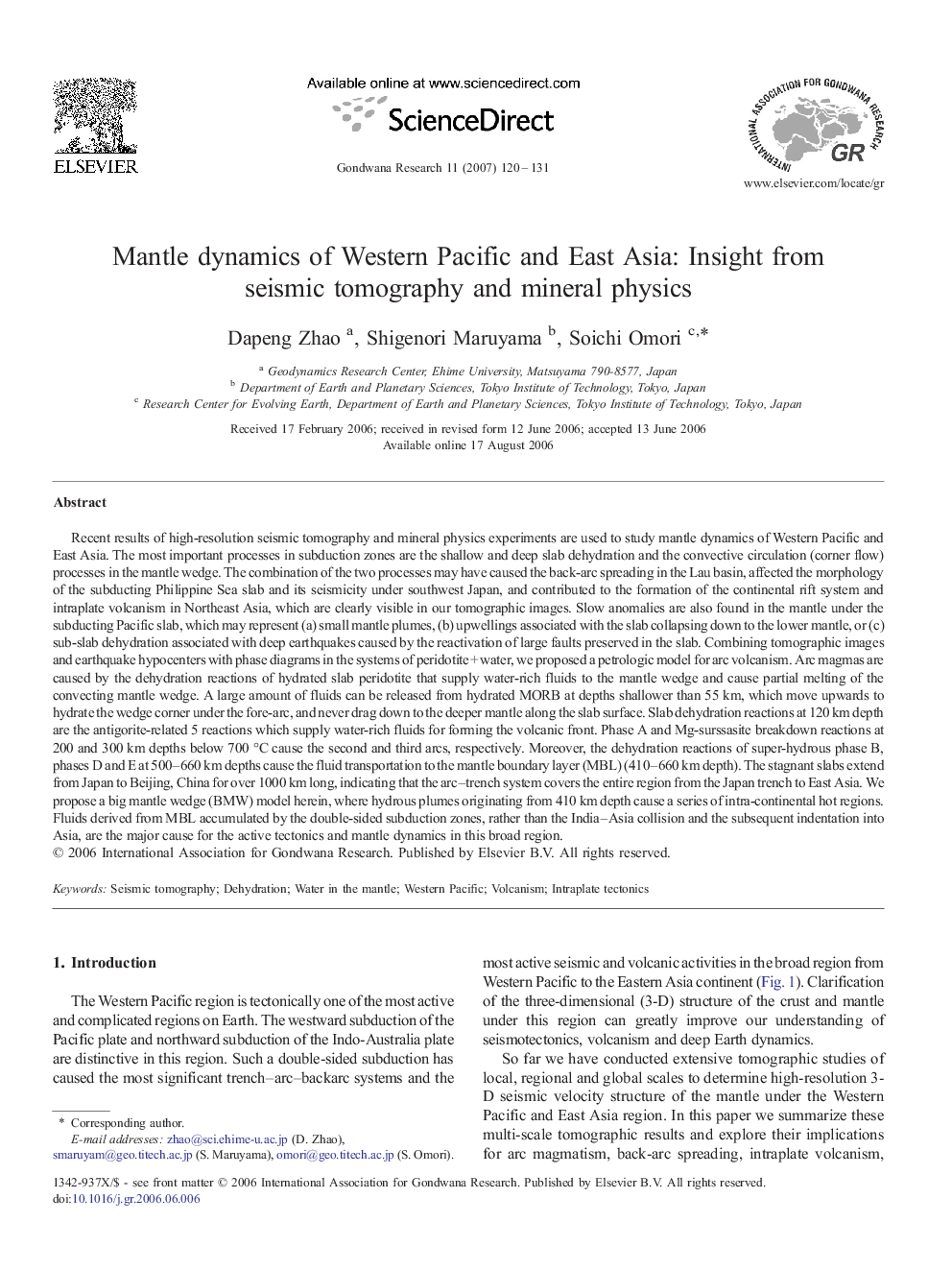| کد مقاله | کد نشریه | سال انتشار | مقاله انگلیسی | نسخه تمام متن |
|---|---|---|---|---|
| 4727825 | 1640154 | 2007 | 12 صفحه PDF | دانلود رایگان |

Recent results of high-resolution seismic tomography and mineral physics experiments are used to study mantle dynamics of Western Pacific and East Asia. The most important processes in subduction zones are the shallow and deep slab dehydration and the convective circulation (corner flow) processes in the mantle wedge. The combination of the two processes may have caused the back-arc spreading in the Lau basin, affected the morphology of the subducting Philippine Sea slab and its seismicity under southwest Japan, and contributed to the formation of the continental rift system and intraplate volcanism in Northeast Asia, which are clearly visible in our tomographic images. Slow anomalies are also found in the mantle under the subducting Pacific slab, which may represent (a) small mantle plumes, (b) upwellings associated with the slab collapsing down to the lower mantle, or (c) sub-slab dehydration associated with deep earthquakes caused by the reactivation of large faults preserved in the slab. Combining tomographic images and earthquake hypocenters with phase diagrams in the systems of peridotite + water, we proposed a petrologic model for arc volcanism. Arc magmas are caused by the dehydration reactions of hydrated slab peridotite that supply water-rich fluids to the mantle wedge and cause partial melting of the convecting mantle wedge. A large amount of fluids can be released from hydrated MORB at depths shallower than 55 km, which move upwards to hydrate the wedge corner under the fore-arc, and never drag down to the deeper mantle along the slab surface. Slab dehydration reactions at 120 km depth are the antigorite-related 5 reactions which supply water-rich fluids for forming the volcanic front. Phase A and Mg-surssasite breakdown reactions at 200 and 300 km depths below 700 °C cause the second and third arcs, respectively. Moreover, the dehydration reactions of super-hydrous phase B, phases D and E at 500–660 km depths cause the fluid transportation to the mantle boundary layer (MBL) (410–660 km depth). The stagnant slabs extend from Japan to Beijing, China for over 1000 km long, indicating that the arc–trench system covers the entire region from the Japan trench to East Asia. We propose a big mantle wedge (BMW) model herein, where hydrous plumes originating from 410 km depth cause a series of intra-continental hot regions. Fluids derived from MBL accumulated by the double-sided subduction zones, rather than the India–Asia collision and the subsequent indentation into Asia, are the major cause for the active tectonics and mantle dynamics in this broad region.
Journal: Gondwana Research - Volume 11, Issues 1–2, January 2007, Pages 120–131